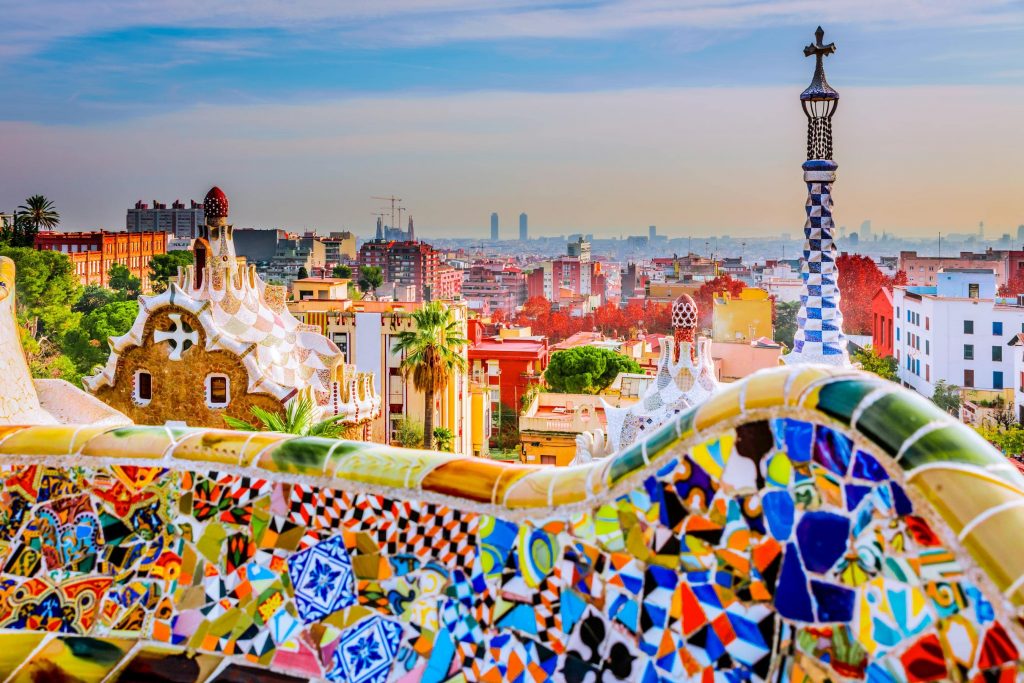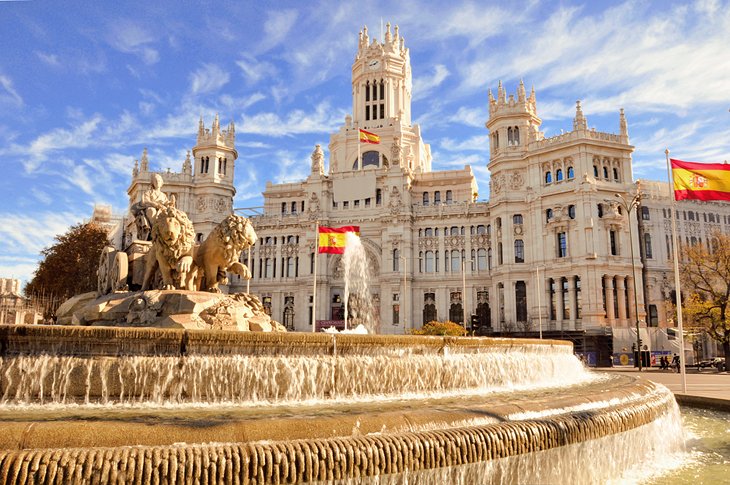Spain is one of the most visited countries in the world and has a lot to offer to the most varied types of tourists, from people traveling with family and children to couples in love looking for a romantic vacation or even simply those looking for sea, sun and nature. Owner of an ancient history, Spain has numerous places that are considered a UNESCO World Heritage Site. In addition to stunning cities like Barcelona, Toledo or Salamanca, this country also has a considerable number of small medieval villages that enchant tourists looking for something more genuine and outside the most popular or traditional tourist routes.
The beaches of Spain are known for their high quality, be it the beaches in the north, the beaches on the south coast, bathed by the Mediterranean, or the beaches of its archipelagos, Canaries and Balearics. If you’re looking for nature, the Pyrenees and Asturias are, without a doubt, a fantastic destination. And the icing on the cake is its cuisine: tapas, montaditos and paella are internationally famous. These are the best places to visit in Spain.
Seville
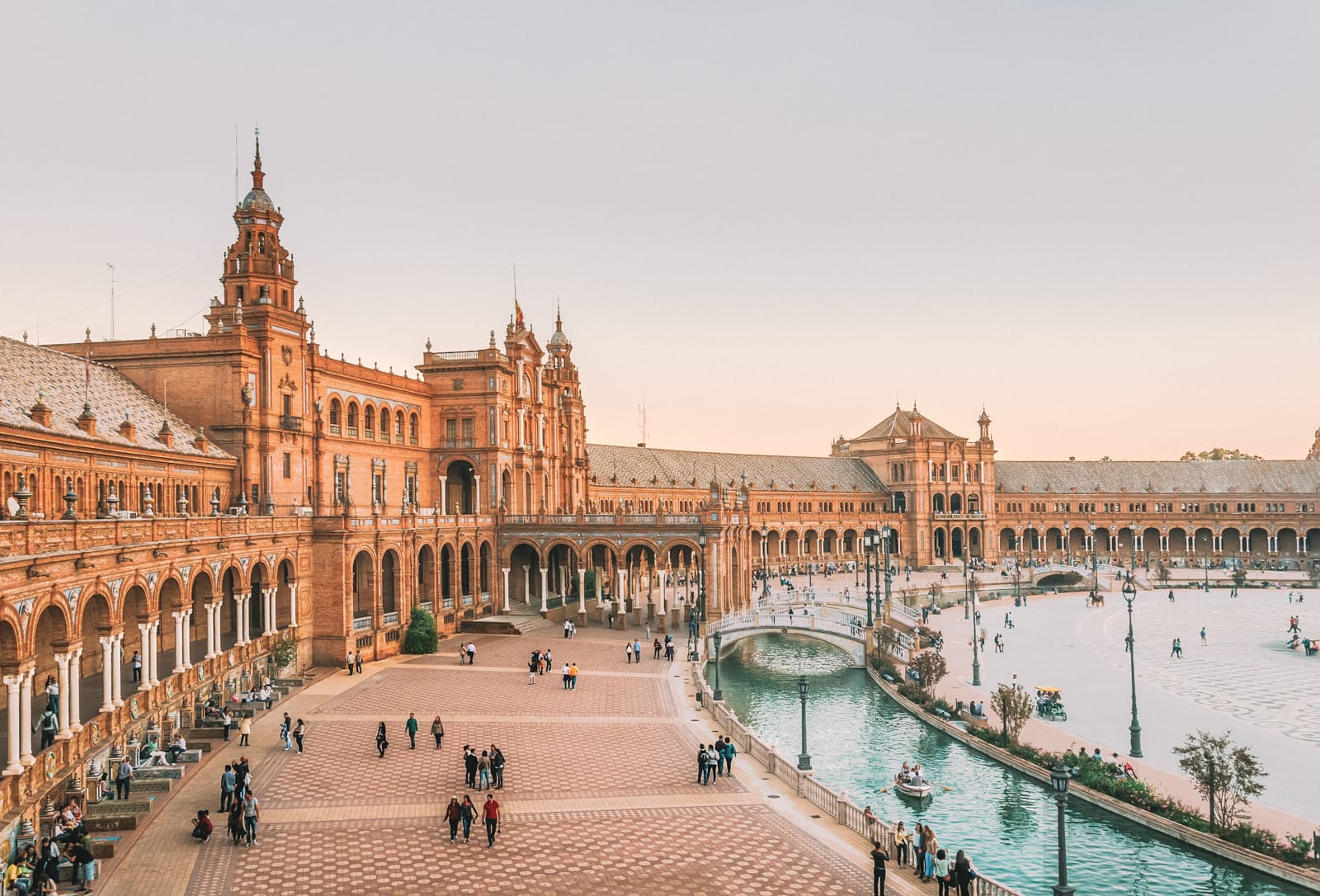
One of the most interesting cities on the Iberian Peninsula: Seville. Full of history, Seville gained regional importance even before the formation of Spain, when it was under Muslim rule and became one of the main commercial and cultural centers in Iberia. Later, already under Spanish rule, it started to play a crucial role in the conquest of the Americas because from here the boats left for America dominated by the Spanish and returned to here loaded with gold and other wealth. With all this, Seville grew and flourished and is today an imposing city, full of monuments from various eras, from Muslims to modern buildings of the 21st century.
Fortunately Seville is a relatively compact city, which will allow you to visit the most important landmarks in just two days, but they will be very busy days! Many visitors start in the center, on the east bank of the Guadalquivir River (the longest river in Seville), where two of the city’s most famous monuments are located: the Alcázar and the Cathedral of Seville, with its Giralda Tower. There are so many places to visit in Seville that you will have to return to the city more often to see them all.
Barcelona
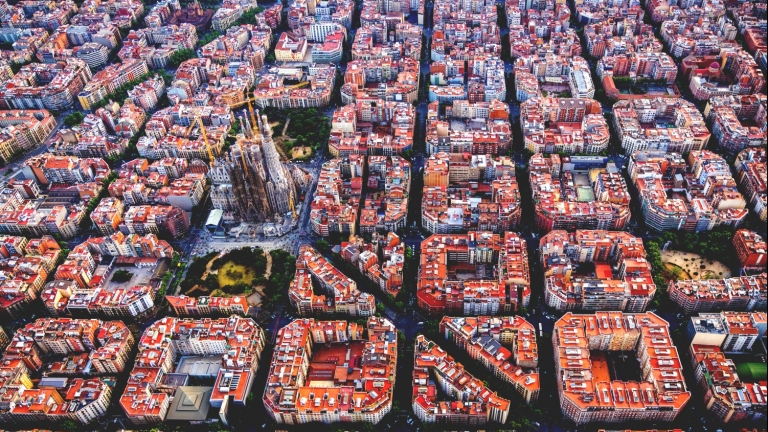
There are hundreds of reasons to visit the city of Barcelona, which is jaw-dropping, but perhaps the most attractive is its architecture. If there is one thing you can look forward to in Barcelona, it is the supernatural architecture that covers the entire city. Being the center of Catalan architecture, Barcelona is both modern and contemporary, making it a jewel of the city to visit. Travel on the metro and visit incredible neighborhoods like Les Corts and Pedralbes or Sant Andreu, or just set out on foot to discover areas like Sant Martí and Ciutat Vella.
Foodies will quickly fall in love with the unforgettable Catalan cuisine that is so prominent in Barcelona. With a heritage that can be traced back to medieval times, the vast richness of Catalan cuisine produces fantastic seasonal dishes that are sure to impress and create a place in the hearts of culinary lovers everywhere. Taste popular dishes such as escalivada and escudella i carn d’olla with stunning wines to crown an unforgettable holiday.
Read the complete Barcelona guide.
Madrid
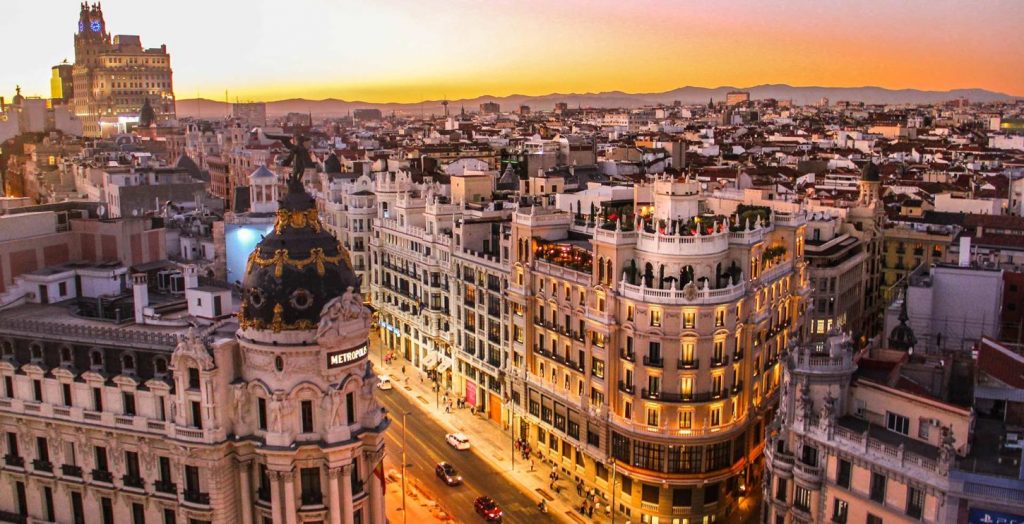
Located in the heart of Iberia, Madrid is a large, modern city that continues to grow every day. With a population of 4 million, what is lacking in architectural gems is more than made up for by its impressive collection of art and culture. Although Madrid has pockets of architectural and historical sites, the real attraction of the city is its museums, such as the Prado, Reina Sofia and Thyssen-Bornemisza museums. In addition to these heavyweights, there are dozens of palaces and boutiques that also have great art collections.
Perhaps Madrid’s real attraction, however, lies in the culture and lifestyle cultivated by the locals. Relaxing and resting on the terrace of a café or leisure trips to the street markets are favorite local pastimes, while parties, bars and clubs come to life at night. Soak up the city’s amazing art collections or simply relax and live like the locals. Madrid always has a different option for each type of tourist.
Santiago de Compostela
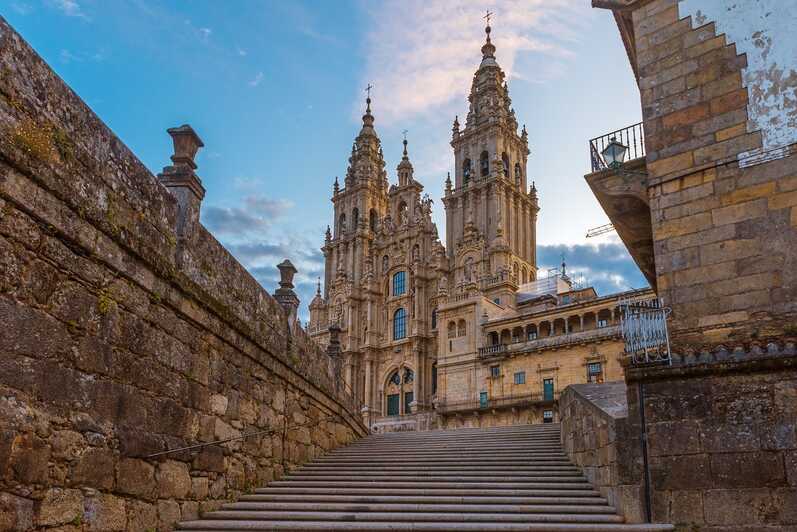
A World Heritage Site since 1985, Santiago de Compostela has attracted visitors and pilgrims from all over the world for centuries. It is the most cosmopolitan city in Galicia, but take it naturally, so from the first moment you feel that you are part of it. There’s everything here. In the historic center, the Cathedral and the Portico da Glória. Emblematic squares such as Obradoiro, Quintana and d’O Toural. Dozens of churches, convents and palaces. Romanesque, Gothic and Baroque. And also shops, bars, restaurants and a beautiful Horticultural Market overflowing with fresh produce.
In addition, in the center, the Alameda with its camellia trees and the Passeio da Herradura, with a wonderful view of the cathedral. And on the banks of the Sar, the Colexiata de Santa María and its impossible inclined columns. Santiago is great. And so it makes us feel. The visitor to Santiago should not miss the opportunity to climb to the roofs of the Cathedral. The visit to the temple roofs was already recommended in the Codex Calixtinus in order to be able to appreciate its splendid beauty. What we can add is that from them you can see a large part of the historical complex and the new part of the city, as well as the surroundings of Santiago, from Monte Pedroso to Gozo, making it an exceptional viewpoint.
Toledo
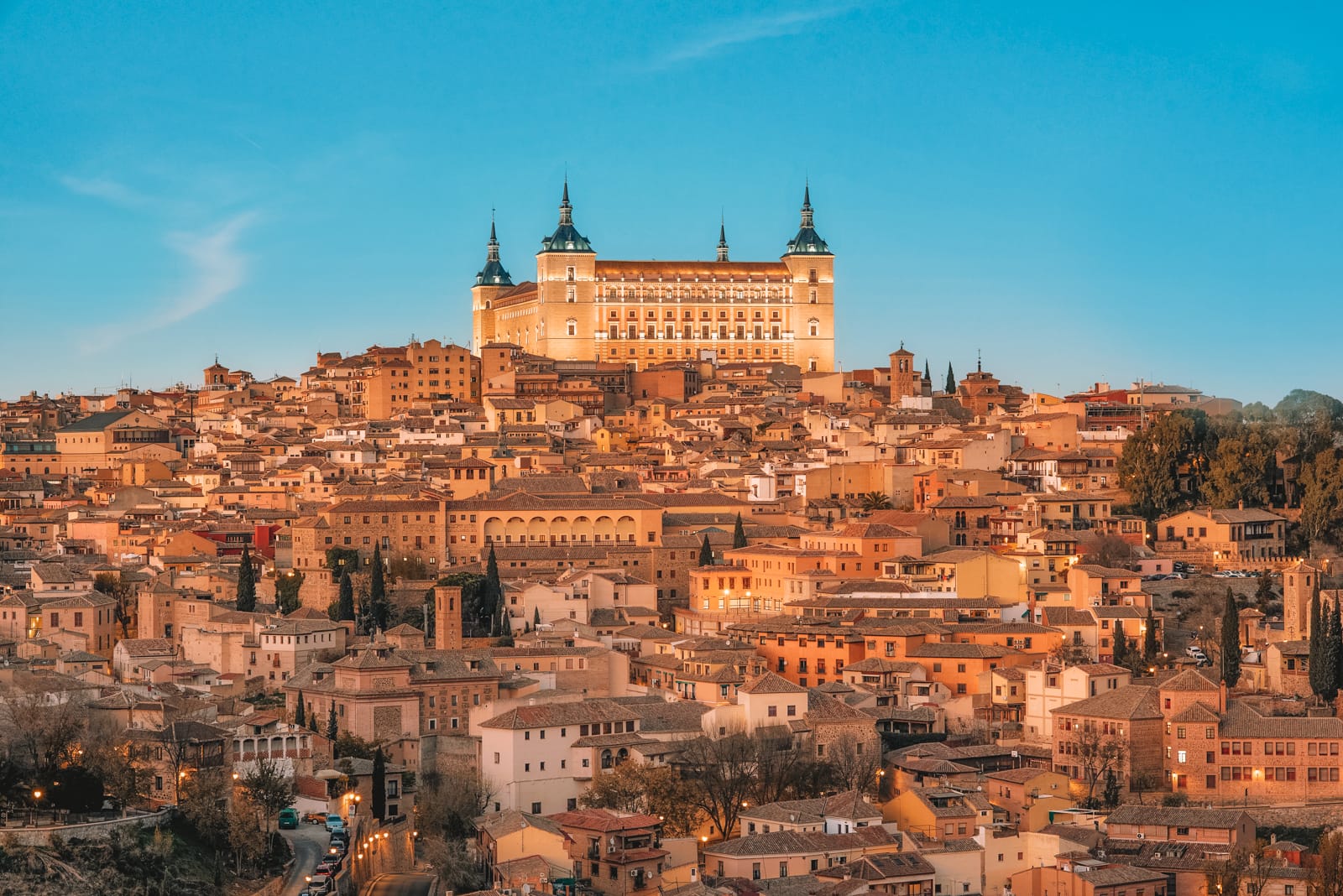
Toledo’s historic center is a UNESCO World Heritage Site, where a glorious past greets you every moment. This old city is a crossroads of Jewish, Islamic and Christian cultures and, in many buildings, you will see how all these influences combine. You will find sumptuous Renaissance paintings and learn more about the Spanish Kings who ruled an entire empire in Toledo.
The rest of the time you will try to find your way around the labyrinthine streets, which are surrounded by historic walls and defended by fortified gates and bridges that remain high until the present day. In its streets and squares you can breathe the history of a monumental city in the former capital of Spain.
Salamanca
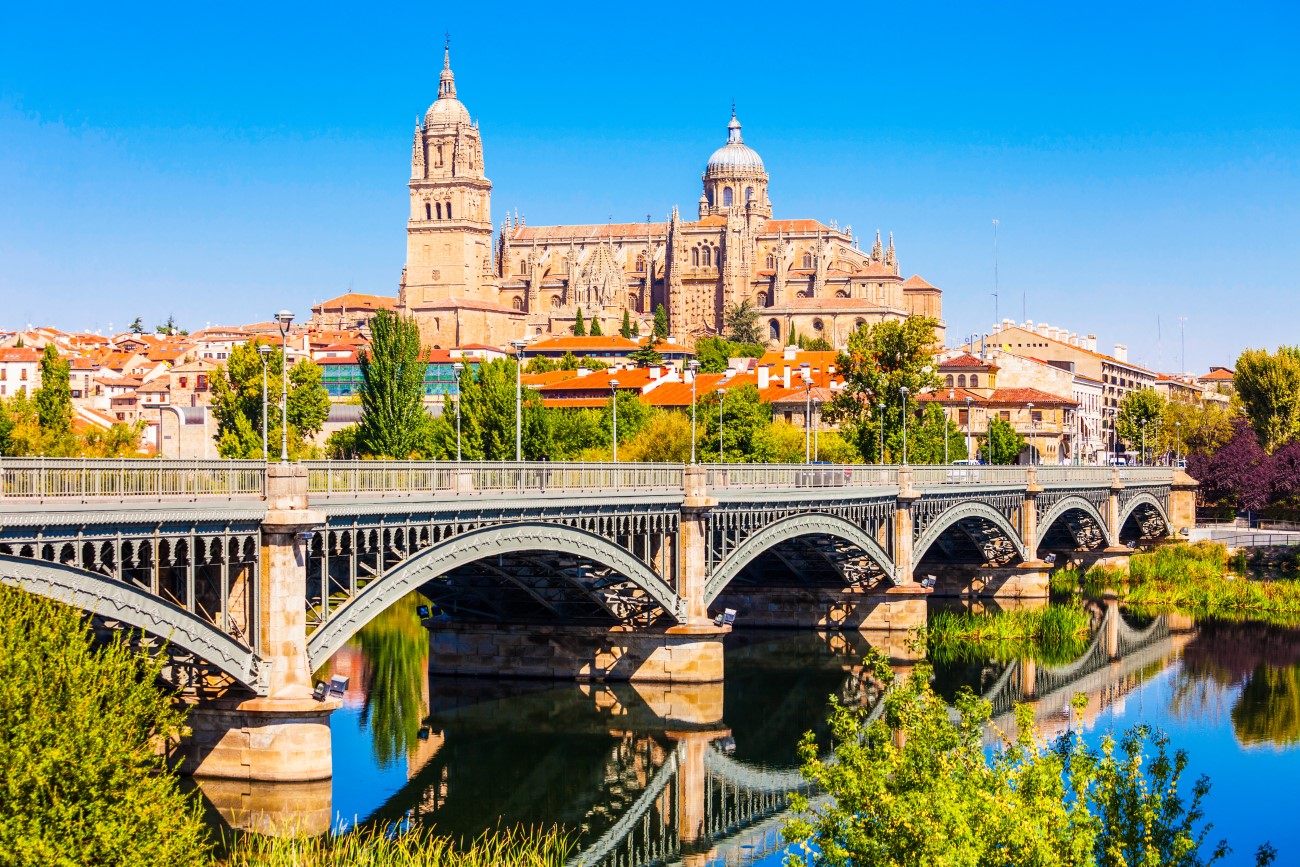
Salamanca is undoubtedly an unmissable city in Spain, thanks to its rich history and absolutely charming atmosphere. Located in the western part of Spain, in the region of Castile and Leon, Salamanca has gained recognition and fame because of its culture and student atmosphere (Salamanca is one of the most popular places to study in Europe). The city itself dates back to the Celtic era and is well known both for the sandstone architecture that dominates the area and for the University of Salamanca, one of the oldest universities in Spain.
For a taste of Salamanca’s history, head to the UNESCO World Heritage Site of the Old Town. It is in the Old City that you can find religious architecture of various styles, such as the Church of San Juan de Barbalos or the convents of Las Claras and Santa Teresa. On the other side of the city, the streets come to life at night with the huge student population that studies here at the university.
Cordoba
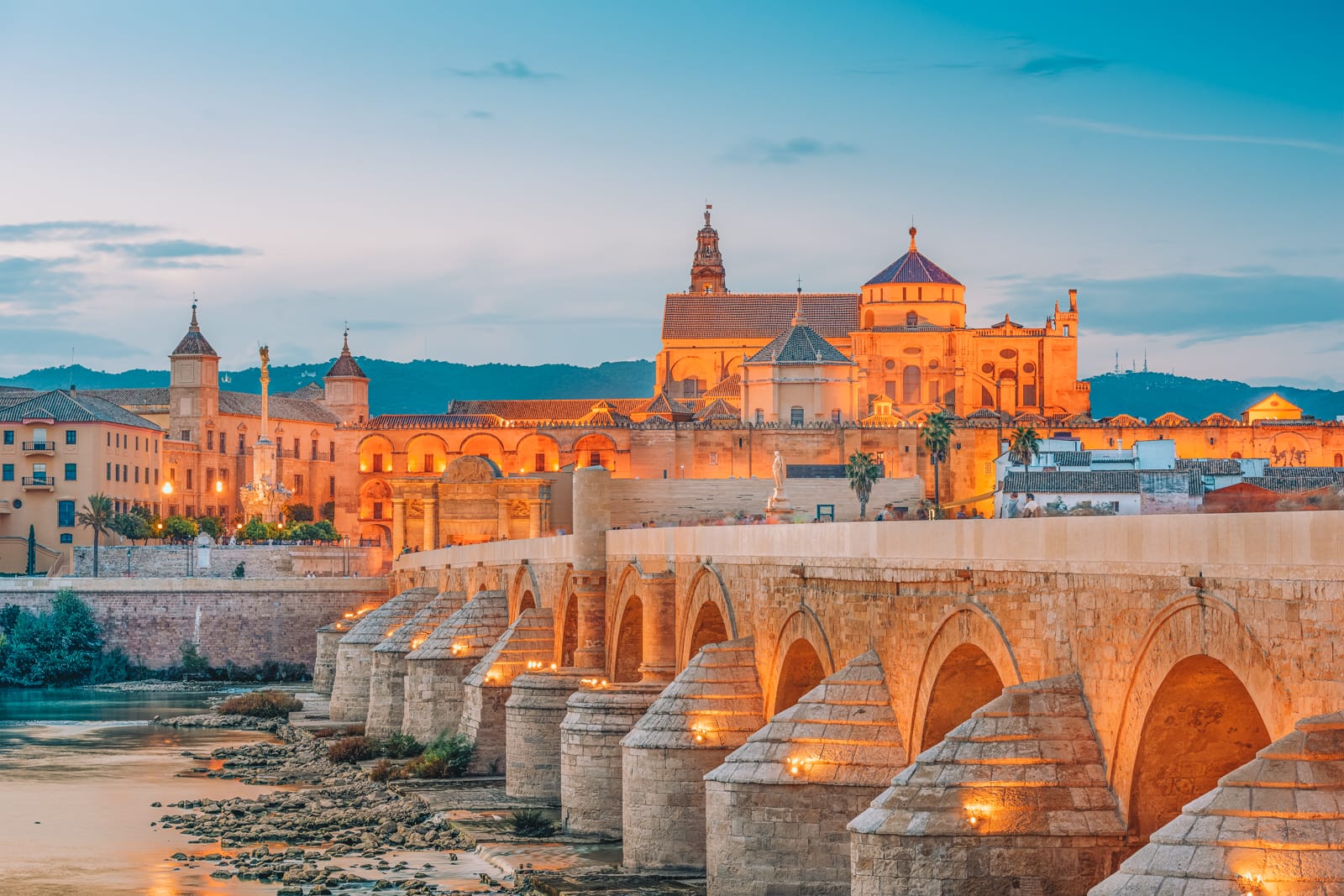
Located at the highest navigable point on the Guadalquivir River, Córdoba is a port city originally founded by the Romans. However, it was not until the city became the capital of Al-Andalus, the Moorish kingdom of Islamic Spain, that Cordoba stood out as one of the main cities to visit in the country. Impressive and a delight for the eyes, there is no doubt that Córdoba is one of the most beautiful cities in Spain. In fact, it was so beautiful that when it was regained by Christians in 1236, most of the city’s architecture was left standing.
A great place to explore on foot or by bicycle, the cherry on top of the city’s cake is undoubtedly the Mosque of Córdoba, which is one of the largest and most emblematic Islamic buildings in the world and still has a cathedral built in the center of the its many arches and columns. Whether you are in Córdoba to explore its Islamic architecture or to explore other places, such as the Jewish Quarter, or simply to wander its streets, the history and beauty of this city will be unforgettable.
Valencia
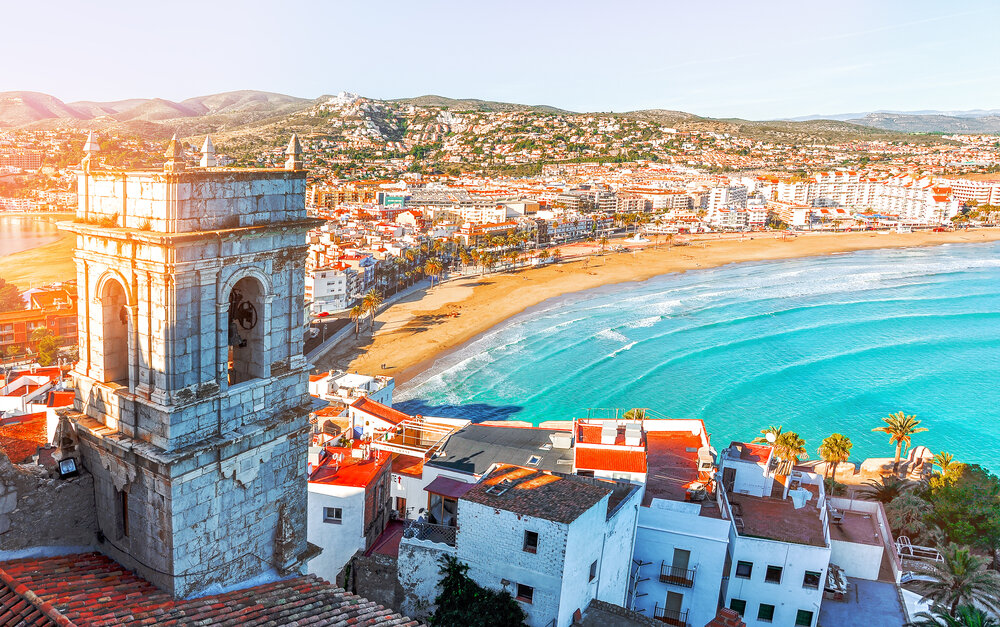
Third largest city in Spain, Valencia is magnificent in all its aspects. Not only is Valencia a fully habitable city, it is also home to a thriving gastronomic scene, one of the best nightlife in the country and an incredible cultural offer. The city has also reached the forefront of innovation, as it diverted its river and built fantastic architectural feats in its place along a beautiful and winding park that delights the Valencians, who like to spend their free time here.
In the midst of brilliant modern architecture and well-kept gardens, Valencia’s history and culture are surprisingly immortalized. To the delight of gastronomes from all over the world, Valencia is surrounded by fertile land, which is one of the main contributors to the city’s status as the birthplace of the famous Valencian paella, a world famous dish that is made with rice, seafood and with the typical vegetables and legumes that can be found in the fertile lands of Valencia.
Burgos
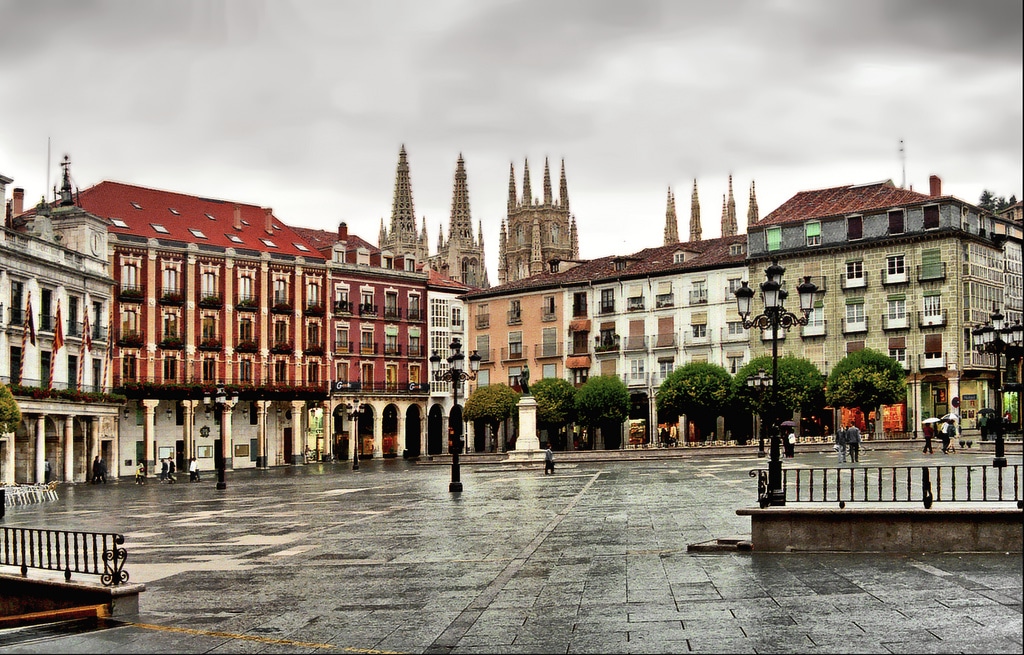
Founded in 884, the city of Burgos, also known as the “Land of Castles”, is charming, memorable and deeply rooted in its medieval history. The charm of this city comes from its northern Castilian atmosphere and from a dispersion of medieval monuments such as Cartuja de Miraflores and the Abbey of Santa Maria la Real de Las Huelgas.
As impressive as these sites are, the main attraction of the city is the extraordinary and imposing Gothic cathedral. A brilliant example of Spain’s incredible religious architecture, it is a dominant presence on the horizon of Burgos and definitely a must. As Burgos is a clean and peaceful city, visitors are welcome and encouraged to explore the city on foot to discover some of the lesser known but equally beautiful parts of the region. Who knows, you may even find an exquisite restaurant and sample the city’s famous cuisine.
Oviedo
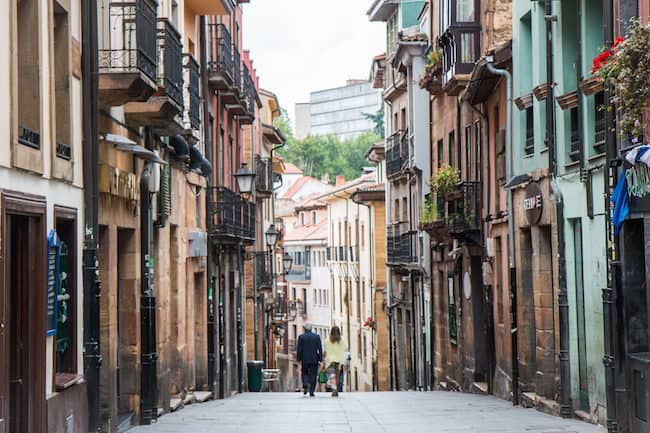
Oviedo is the main city in Asturias and is also the capital of the Principality of Asturias. It is strategically located in an area close to the sea and the mountain, in the Picos de Europa. The city of Oviedo is large and developed, but at the same time, welcoming and pleasant enough. The historic center can be covered on foot and is close to the main road connections.
The most famous street in the city of Oviedo is Calle Gascona, also known as Boulevard de la Sidra. It is a tradition to walk down this street to drink the cider, an alcoholic drink made with fermented apple juice and which is the most famous in Asturias. The city of Oviedo is known for its statues. There are about 150 statues scattered around all kinds of places. If we have to choose our favorites, we don’t hesitate to talk about the cartoon character Mafalda, the dog Rufo and the artist Woody Allen.
Vigo
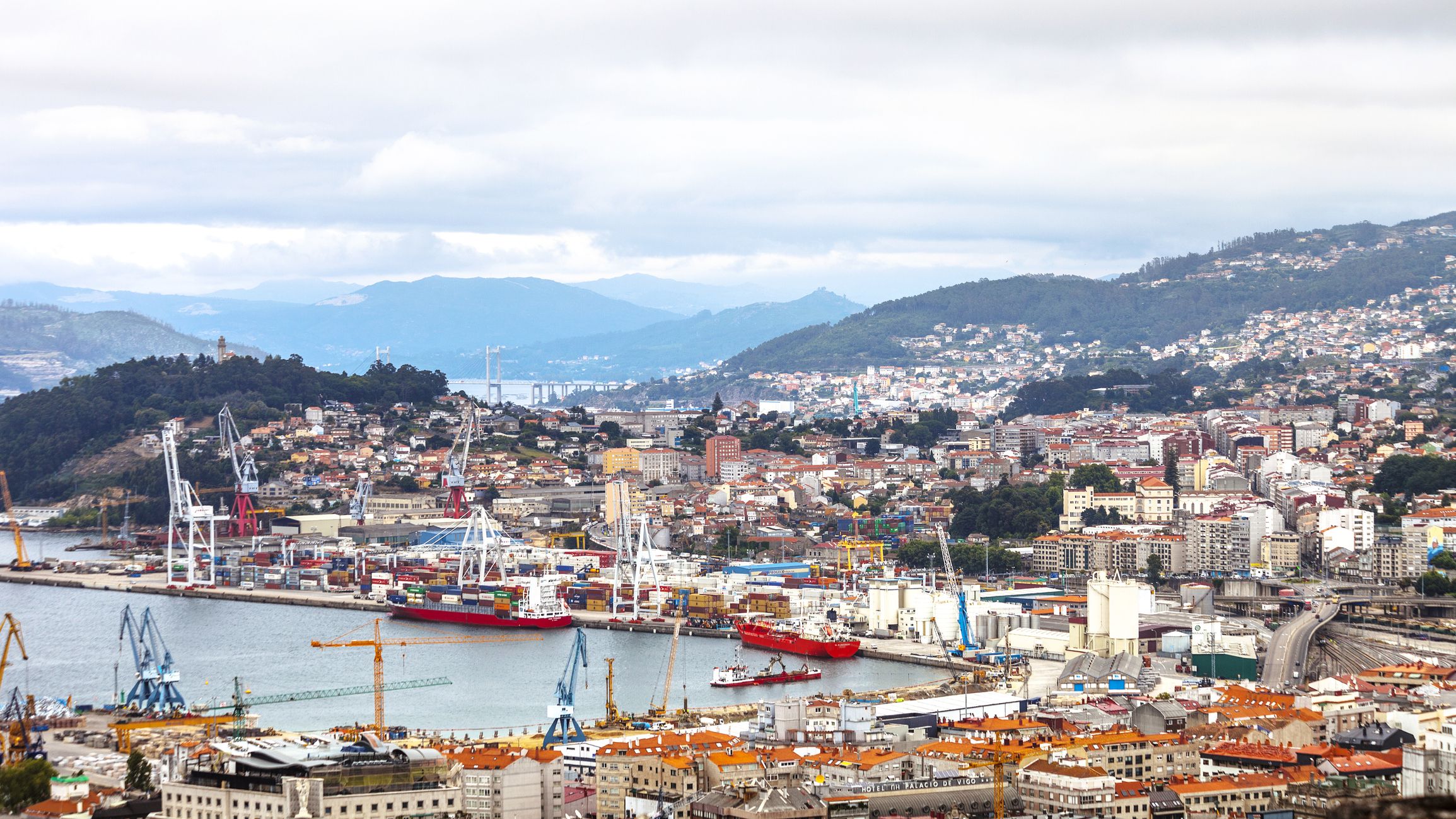
Jules Verne tells us that Captain Nemo’s best kept secret is in Vigo. Did you know that this is where the Nautilus ship came to get gold? In the Vigo estuary there are dozens of sunken galleons loaded with gold from the Americas. Treasures that have not yet seen the light. But there are also treasures available to everyone. How to stroll through the Historic Center and taste some oysters at A Pedra. Or a day at the beach in Samil. Or the Parque de Castrelos, with its palace and gardens. Or a boat trip to the paradise of the Cíes Islands. Or strolling streets lined with elegant camellias. Or go up to Castro to see an impressive sunset. And for those who feel young, the legendary viguesa night … Open until dawn. This is Vigo, the largest city in Galicia. A modern and enterprising city, open to the world.
The visitor to Vigo has a unique opportunity to meet the virgin nature: to discover the Cíes Islands. There are three islands located at the entrance to the Ria de Vigo and are part of the Terrestrial National Maritime Park of the Atlantic Islands of Galicia. They have a campsite and regular transport in the high season that takes tourists to the archipelago, with several trips throughout the day, although we must remember that there is a limitation of visitors per day, to reserve the crossing in time. Ideal place to enjoy a natural environment on paradisiacal beaches. Great landscape richness of fauna (especially sea birds) and flora.
Granada
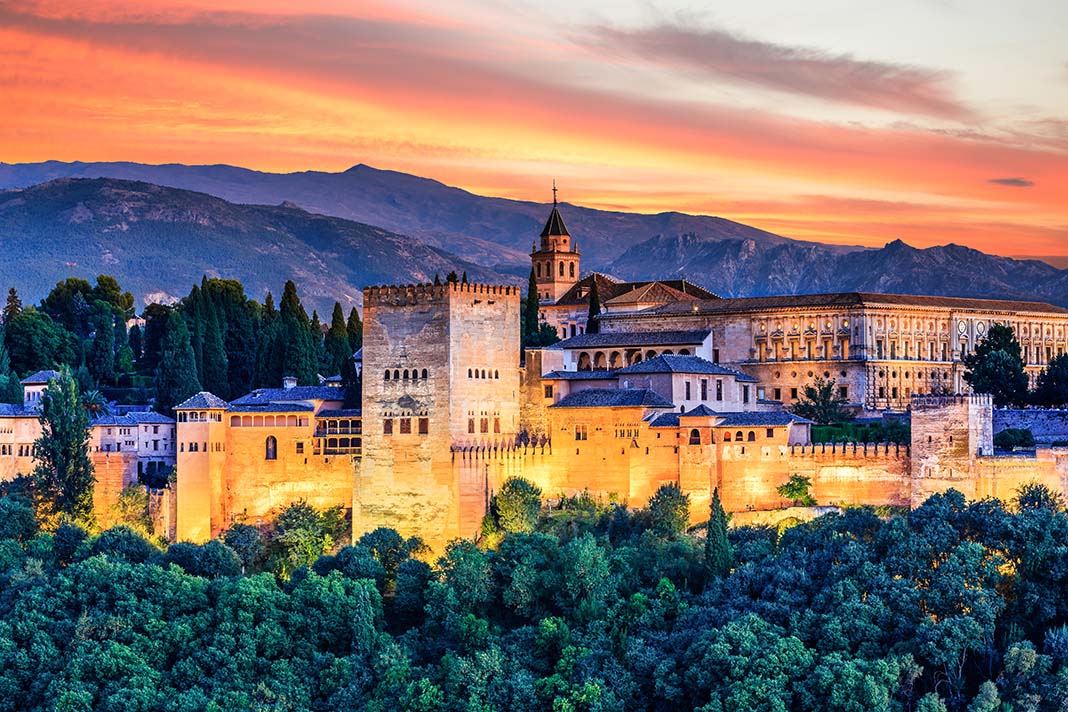
Granada is a jewel in the Andalusian crown with an interesting history and absolutely stunning views. Named Granada by the Arabs when it was invaded in the 8th century, this city was a stronghold of Islamic Spain and became the last city to be recovered by Christian forces in 1492. Thanks to its rich Moorish heritage, the city’s architecture is a wonderful place to visit and has been informally, albeit legitimately, dubbed the “Land of a Thousand Castles”.
Stroll through the narrow, winding streets of Albayzin for an adventure in the city center or walk through the neighborhood of Realejo and its many gardens. One of the absolutely essential pilgrimages for any visitor to Granada is a trip to the Alhambra. In the Alhambra, the Moorish culture is very much alive, you can feel its ancient spirit that resides inside the halls of this historic monument.
Bilbao
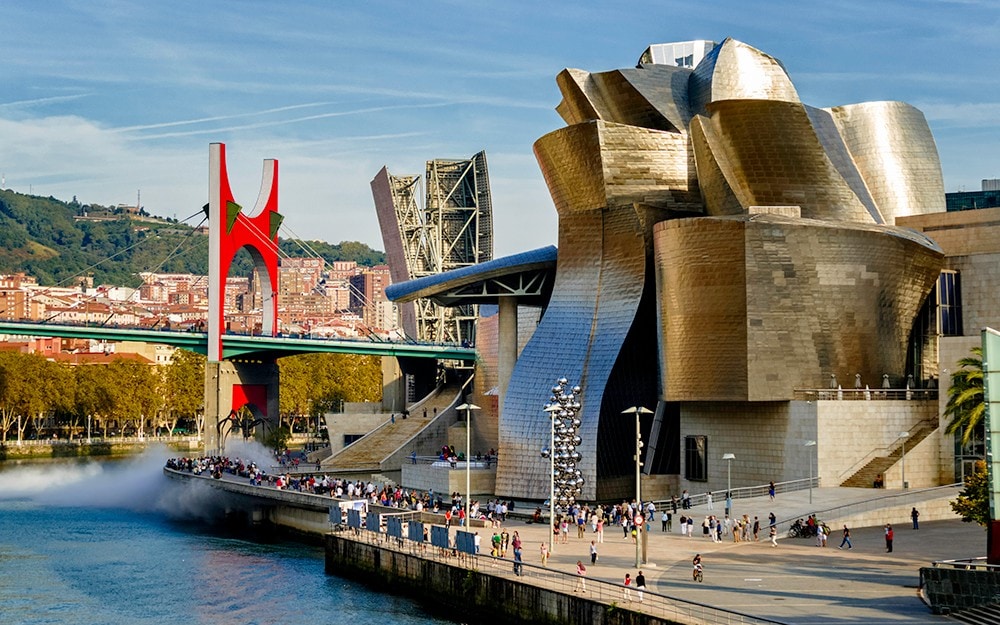
Filled with an exuberant heritage of culture and art, Bilbao is Spain’s gateway to the Basque cultural universe and is a perfect holiday destination for families, couples or individual travelers. The de facto capital of the Basque Country, Bilbao is an industrial port city in northern Spain and a shining example of urban transformation. Although it may not have the same architectural beauty as other Spanish cities, Bilbao offers a different perspective on Spanish art.
One of the must-see places in the city is the famous Guggenheim Museum in Bilbao, which was designed by Frank Gehry and opened in 1997. Delight yourself with modern and contemporary works of art in an attractive titanium building that stands out thanks to its innovative design . In addition to being an important European center of culture and art, Bilbao is above all a good sample of the working culture and the art of welcoming the Basque people. A must-see destination in northern Spain.
Pamplona
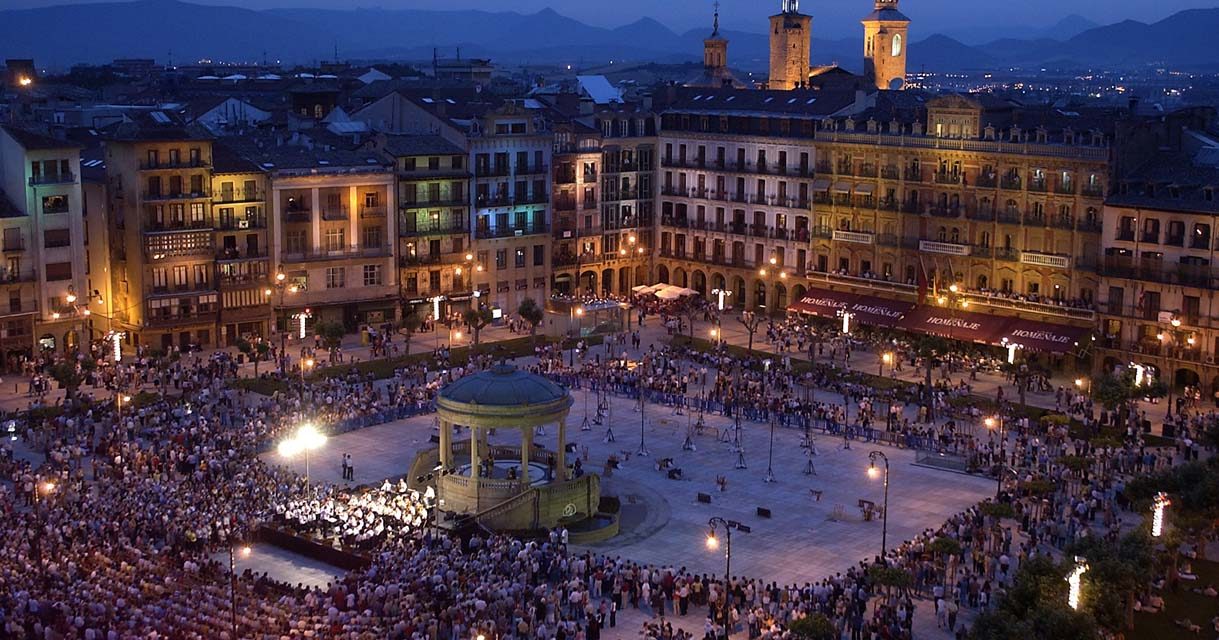
Its location at the foot of the Pyrenees Mountains and the fact that it is one of the first stages of the Camino de Santiago, made several architectural trends arrive in Pamplona earlier than in other Spanish cities. Much of the historic center is very well preserved and dates back to the Middle Ages. The oldest part of the city, La Navarrería, is located where the Roman city of Pompaelo was once. Thousands of years later this old quarter is the heart and soul of modern Pamplona, with many parks, squares, pintxos bars (tapas in Basque) and the city’s wonderful Gothic cathedral.
Pamplona, known as one of the greenest cities in Europe, has an enormous amount of parks and gardens spread throughout the city. is one of the factors that contribute to the inhabitants of this small town to have a high quality of life. The bullfighting culture is going strong in Pamplona and proof of this is its annual Running of the Bulls. This local party gained international notoriety with the publication of the novel O sol also de lavanta by writer Ernest Hemingway. Today this event is more popular than ever, with thousands of people from all over the world coming to the city every year to eat, drink, have fun and watch the race through the narrow streets of Pamplona.
Zaragoza
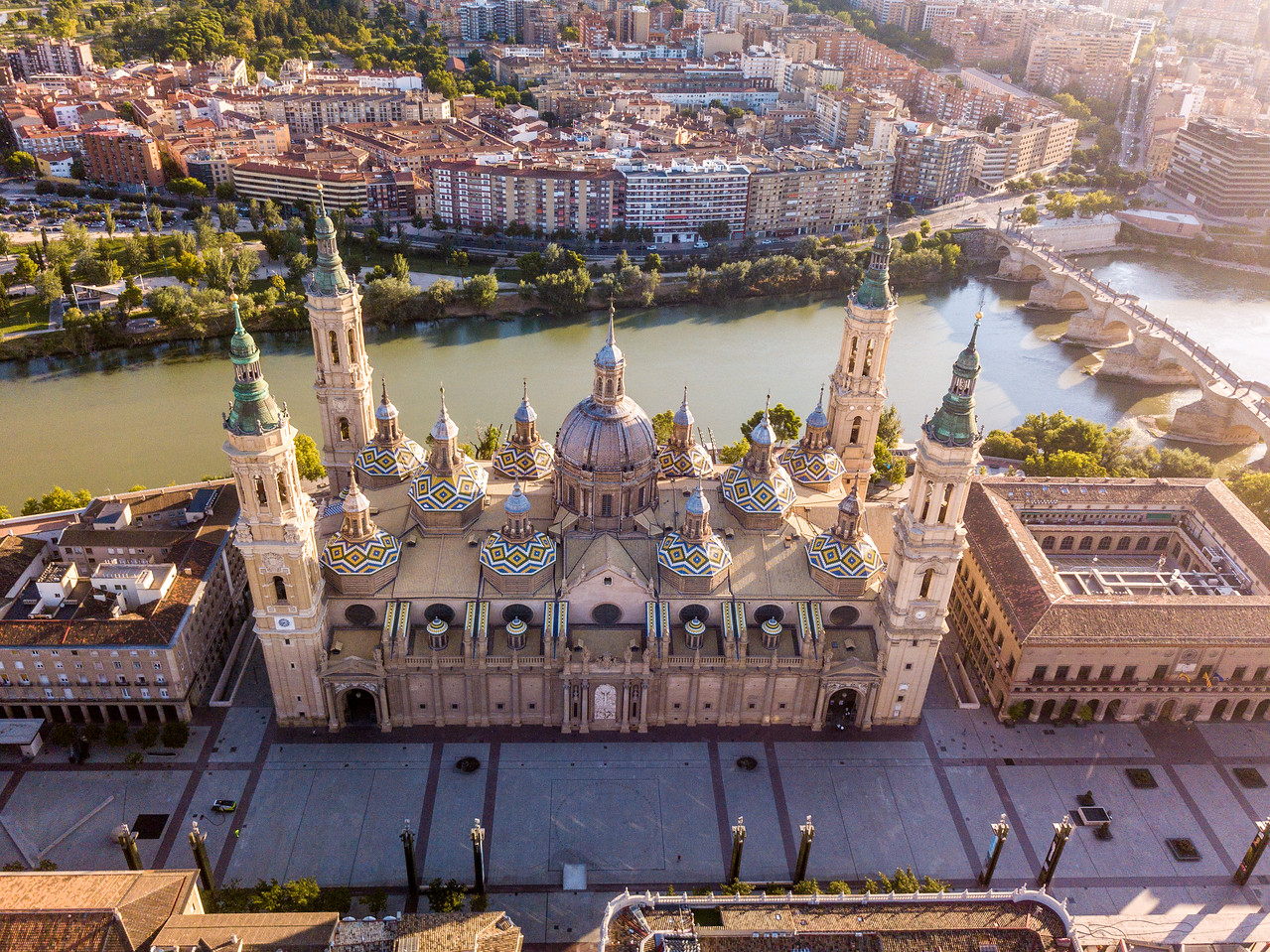
Halfway between Madrid and Barcelona, Zaragoza is the capital of the autonomous community of Aragon and one of the main Spanish cities. Located in a valley, at the foot of the Pyrenees and on the banks of the River Ebro, the city takes a nap on hot days and wakes up to cool nights. With 2,000 years of history, Zaragoza has an important historical legacy, including the Moorish complex that is part of the UNESCO World Heritage List. Gastronomy and nightlife are two other good reasons to visit this Spanish city.
Like what happened in Lisbon with Expo 98, the 2008 World Exhibition in Zaragoza was an opportunity for the city to wash its face and create modern Zaragoza. The various infrastructures built for the exhibition are now tourist attractions. The Pasarela Monterola pedestrian bridge, the Aquarium and several buildings such as the West Pavilion or the Water Tower stand out. In ancient Zaragoza, there are also many monuments of interest, starting with the Pilar Basilica, the largest baroque temple in Spain, built between the 17th and 18th centuries, and the Cathedral of San Salvador, which houses a museum of medieval tapestries.
